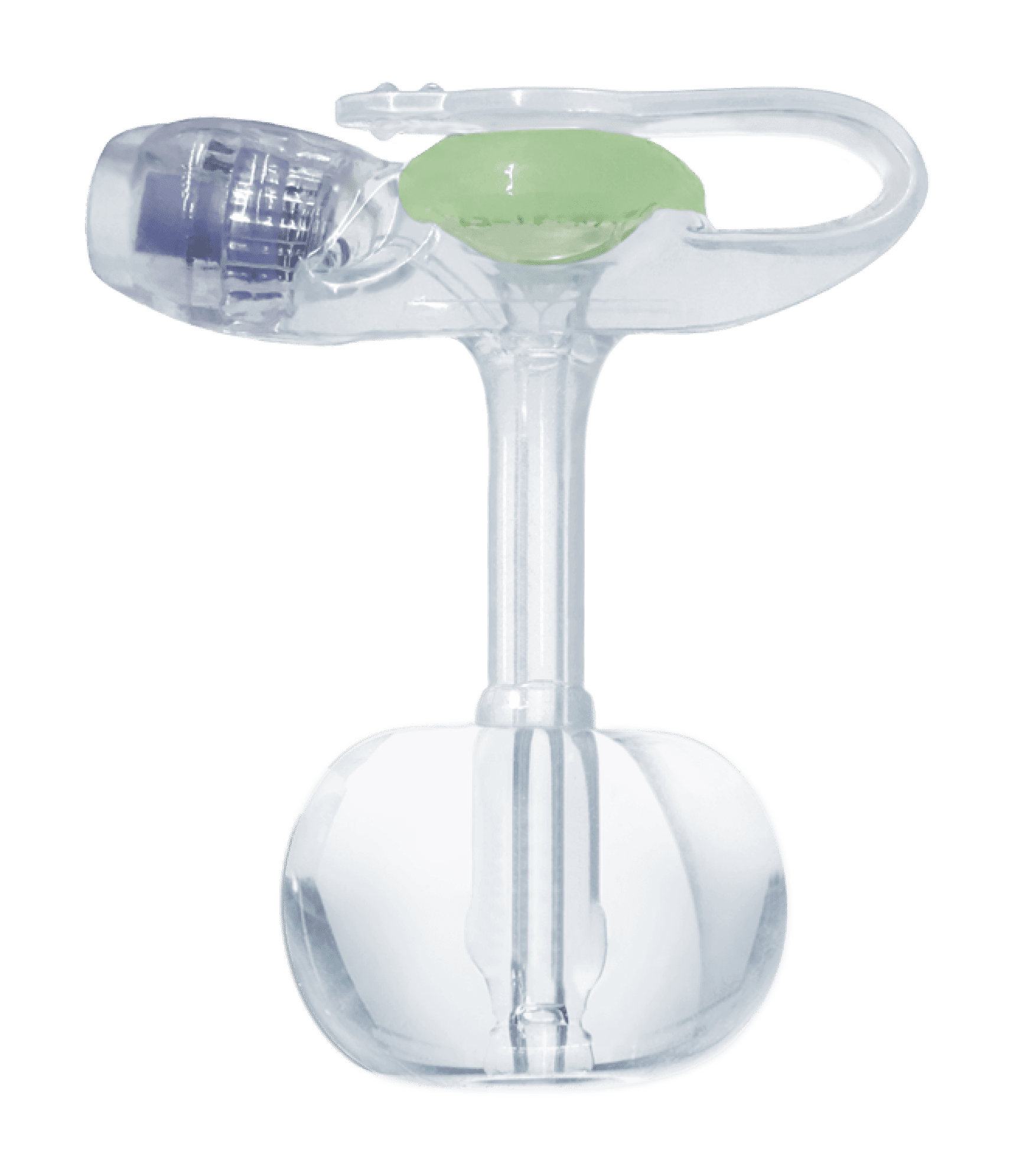
MiniONE® Family of G-Tubes
Low Profile Balloon, Non-Balloon, & Capsule Non-Balloon Buttons.
The More Comfortable Alternative for Enteral Feeding
As a caregiver or patient, we believe you have a right to the most comfortable and reliable gastrostomy tubes; that’s why we developed the MiniONE® line of buttons. Whether you use our Balloon or Non-Balloon g-tube designs, we strive to provide the comfort and confidence you deserve, minimizing leaks, balloon breaks, and granulation tissue.
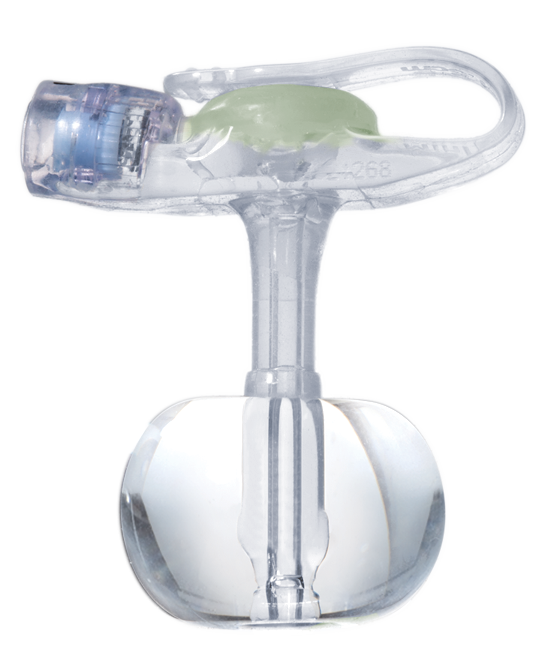
MiniONE® Balloon Button
The MiniONE® Balloon Button product line offers a 37% lower profile external bolster and is made from medical-grade silicone to reduce skin irritation and improve patient comfort. The soft and flexible external bolster is easy to clean and less bulky. Available in 12, 14, 16, 18, 20, and 24F with varying stoma lengths ranging from 0.8cm to 10 cm.
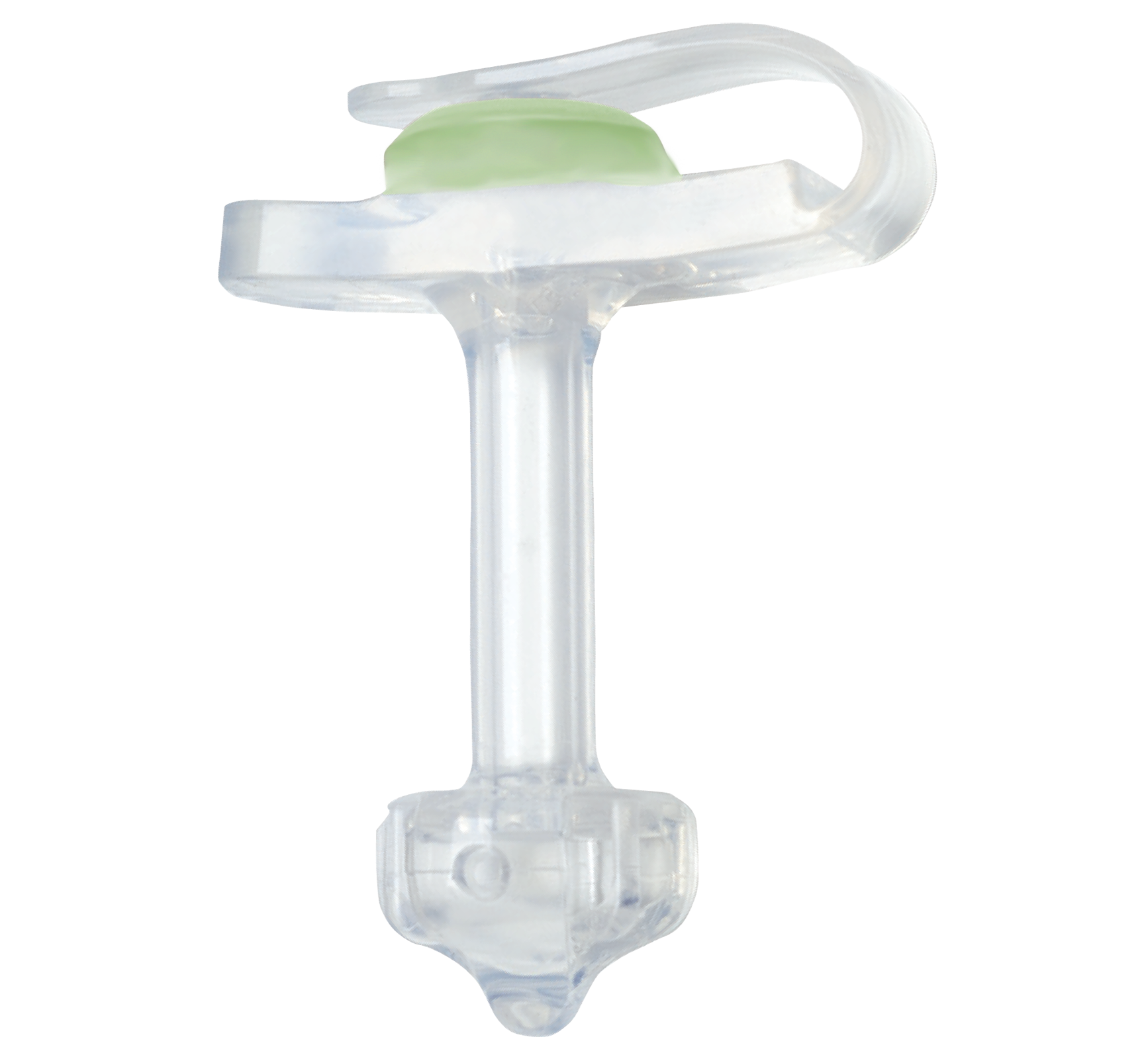
MiniONE® Non-Balloon Button
The MiniONE® Non-Balloon Button is a great alternative for patients who do not tolerate balloon devices. It uses a bolster system on the button shaft to hold the button in place, instead of a balloon. Its lower profile design is easier to conceal under clothing than other obtrusive g-tubes. Available in 14, 18, 20, and 24F with varying stoma lengths ranging from 1.0 cm to 4.4 cm.
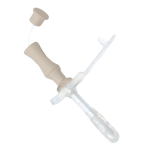
MiniONE® Capsule Non-Balloon Button
The MiniONE® Capsule Non-Balloon Button offers advantages found nowhere else! It combines the advantages of a low profile device with the longer life of a non-balloon device. Due to insertion similar to that of a balloon device, the capsule technology dramatically reduces discomfort during placement. Available in 14, 18, 20, and 24F with varying stoma length sizes ranging from 1.0 cm through 4.4 cm.
MiniONE® Benefits: Locking Feed Sets

Hold the button firmly between the balloon fill valve and feed port.
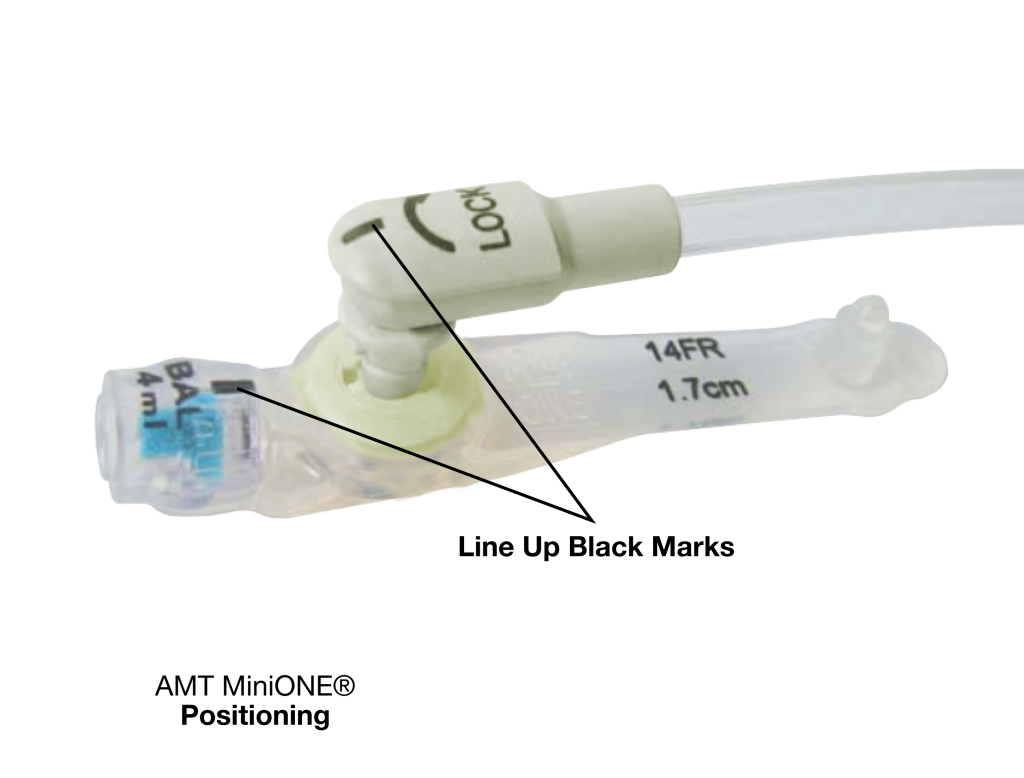
Line up the black marks & insert feed set into feeding port.
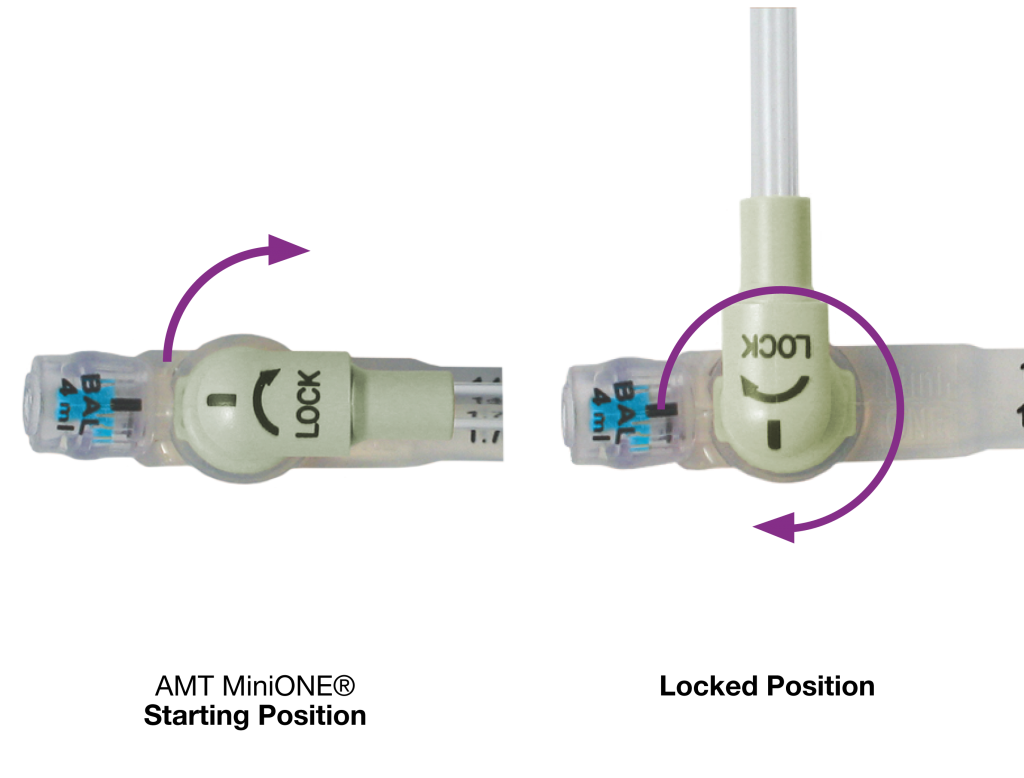
Turn feed set clockwise to 3/4 turn.
MiniONE® Benefits: Granulation Tissue Reduction
By minimizing leaks at the stoma site, MiniONE® buttons may reduce granulation tissues in many patients.
“Upon switching to the AMT Balloon MiniONE® we began seeing a remarkable reduction in incidence and severity of hypertrophic granulation tissue (GT). The photos (below) are from a single patient. Photo #1 exhibits significant GT; photo #2 was taken two weeks later and shows a very significant reduction in the amount and severity of GT. This response was typical in a majority of our patients.”
Quotation and photos are with permission of Richard Grossberg, MD, Medical Director, Hattie Larlham Center for Children with Disabilities, Mantua, Ohio.

Looking to order or have questions?
Full contact form
"*" indicates required fields
AMT MiniONE®
Frequently Asked Questions
AMT has provided this information as an educational resource tool. This is not intended as a substitute for professional medical care. Your FIRST source of information should be your healthcare provider.
What should I do for leakage around the device?
-
- Make sure the balloon is filled with the prescribed amount of water (resistance should be felt when gently pulling on the tube). NOTE: The recommended fill volume is printed on top of the fill valve. If you have questions, contact your healthcare provider.
- Check that the g-tube corresponds to the prescribed French size and length. If the incorrect device is in place, call your doctor.
- The g-tube may be too tight or too loose. Call your doctor to have the stoma remeasured.
For new placements, it may take time for the stoma tract to naturally heal, firm up around the tube, and conform to the balloon. If leaking persists, contact your healthcare provider. - Be sure to rotate the g-tube daily.
- With each placement, the stoma length should be measured with the AMT Stoma Measuring Device.
- Causes for Leakage:
- Incorrect size
- Weight change
- Amount of water in balloon may be too much or too little
- Tension at stoma site
- Stomach may need to be decompressed
How do I handle balloon failure or the balloon not deflating?
BALLOON FAILURE:
- A balloon may leak or deflate over time due to medications, balloon inflation volume, stomach acid, G-tube care, or natural wear. Always keep an extra G-tube on hand in case of an incident. Do NOT remove G-tube until a replacement is available in order to prevent the stoma from closing.
BALLOON WILL NOT DEFLATE:
- Clean the balloon port with a cotton swab to make sure formula/medication or other contaminants are not blocking the balloon port. Insert a slip-tip syringe, push, and twist one-quarter turn. If the balloon still will not deflate, please contact us by calling 800-869-7382. If the problem persists, call your doctor.
What should I do for stomach contents leaking around the tube?
Check stomach for residual, which is the gastric fluid and formula left within the stomach cavity between feeds. If excessive residual occurs often, the patient may be receiving too much formula at one time, the stomach may not be emptying normally, or the G-tube may be too loose or too tight. Call your doctor to have the stoma remeasured.
What should I do if the feeding set becomes disconnected?
Stop the feeding pump and estimate the amount of formula lost. Wipe tube connections thoroughly with soap and water, then clean the inside of the feed set and device feeding port with a clean cotton swab and soap and water. Dry the connectors and reconnect the tubes. Add additional formula, accounting for the loss, and resume feeding.
How can I prevent tube clogging?
- Flush G-tube with 5 ml (10-20 ml for adults) of warm water before and after administering food or medication, every 3-4 hours of continuous feeding, and after checking for stomach content residual. Do NOT place foreign objects down the center of the G-tube. This will damage the G-tube, causing it to become nonfunctional. Make sure the G-tube is in the correct location within the stomach.
- DO NOT mix medications with formula while feeding; always administer medication one at a time and thoroughly clean the extension set. Try to obtain your medications in liquid form when possible. If only available in tablet form, ask your pharmacist if it is safe to crush the tablet into a fine powder and mix with warm water.
How do I know if the G-tube is too tight against the skin?
The G-tube should be able to turn easily without resistance from the patient’s skin. If the G-tube does not turn easily or if redness/bleeding occurs at the stoma or area directly underneath the G-tube, call your doctor. The patient may need to be re-measured for a longer G-tube.
With each placement, the stoma length should be measured with the AMT Balloon Stoma Measuring Device.
What should I do if the G-tube is pulled out?
Although the G-tube is designed to decrease the number of pull-outs, a G-tube may become accidentally dislodged. If properly trained, replace the device immediately or call your doctor as the stoma may begin to close within the first hour a device is removed. ALWAYS be sure to have a replacement G-tube on hand for immediate replacement.
How should I handle vomiting and/or diarrhea?
Contact your healthcare provider if you or your patient is experiencing vomiting.
Aspiration (inhalation of food or stomach contents into the lungs) may occur while vomiting, causing difficulty in breathing or other serious medical conditions. Stop feeding and decompress the stomach immediately if incidence occurs. CONTACT EMERGENCY CARE IMMEDIATELY IF DIFFICULTY IN BREATHING OCCURS, OR ASPIRATION IS SUSPECTED.. DO NOT FEED WHILE THE PATIENT IS LYING FLAT.
What should I do for constipation?
Contact your healthcare provider if constipation is experienced.
This may occur due to dehydration, inactivity, feeding routine, or a change in formula or medicine. Call your doctor if this continues.
Why do I have an upset stomach?
An upset stomach may occur if too much formula is administered or if the formula is delivered too quickly. Call your doctor if this continues.
When should I call my physician for stoma-related concerns?
Call your physician if any of the following is observed:
- If the skin around the site is red or raw
- If there is drainage around the site that is white, yellow, or green, and may smell bad.
- If crusting is noted at the site
- If there is repetitive leakage of food or stomach contents. (Gauze or pads should not be necessary.) If there is leakage, the G-tube may be too loose or too tight and should be remeasured. Call your doctor to have the G-tube remeasured.
- If the tube falls out and you are unable to replace it easily
- If the patient experiences diarrhea or vomiting
- If the patient develops a fever
- Pain at the g-tube site
- Bleeding, pus, or inflammation at the g-tube site
If the tube becomes displaced or completely falls out of the stoma tract, consult your physician.
If you have been properly trained by your healthcare provider to replace the tube and have a new device on hand, it is important to immediately place the new G-tube in the stoma tract to prevent it from closing.
It is important to ALWAYS keep a spare MiniONE® Balloon Button on hand for emergency situations.
 Order Now
Order Now